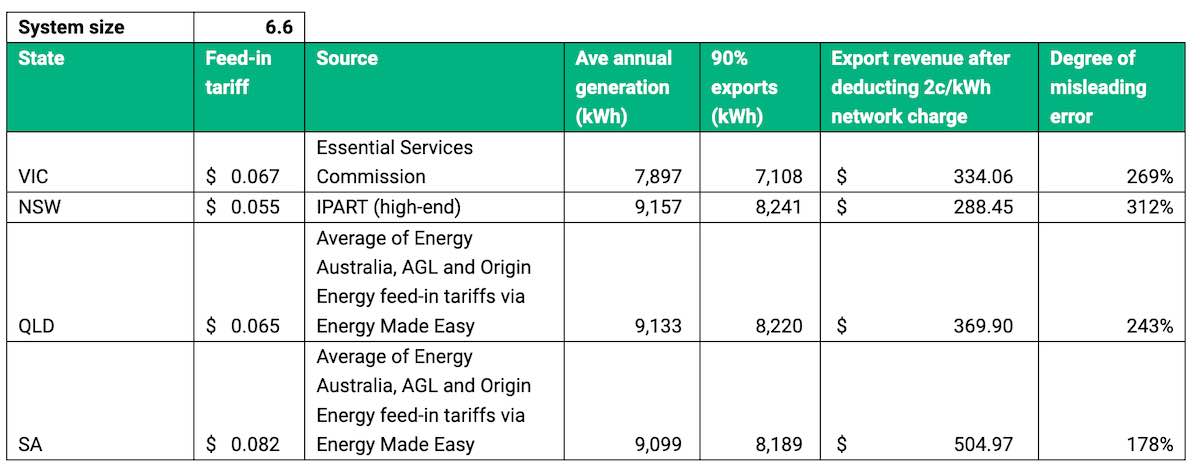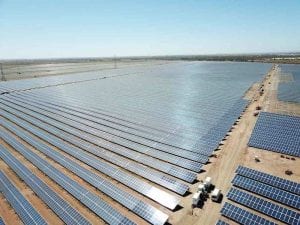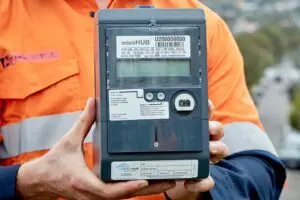Two leading energy analysts have slammed the basis of a survey claiming two-thirds of Australian consumers support the so-called “solar tax”, arguing that it “badly misled” respondents about key details of the proposed rule change.
Green Energy Markets director Tristan Edis said the survey, commissioned by the industry-funded Energy Consumers Australia, had, in particular, misled its more than 2,000 respondents over the amount of money solar households could expect to earn from exports if the charges came into play.
The results of the survey, which was carried out by research firm Newgate, were pushed out to mainstream media on Tuesday, and dutifully reported without question, and touted by ECA chief Lynne Gallagher as “clear and credible evidence about what consumers really want and think.”
Consumers are at the centre of the deeply divided debate over whether, or how, solar homes should pay to be part of a two-way energy market, or whether doing so is any sort of solution to a problem that, itself, remains hotly debated. (See Alan Pears today: The “solar tax:” Are we having the wrong debate?)
According to the ECA, the survey found that more than two thirds (69%) of Australians felt positively about the proposed [rooftop solar] reforms with only 6% viewing them negatively.
Further, the survey found that consumer support was highest in households with larger bills (78%) and those considering investing in solar (77%).
Existing solar customers were also supportive, the ECA said, with 68% of those who already had rooftop solar “greeting the proposed changes positively,” 11% regarding them negatively and 21% ambivalent.
But Edis says all of these results “aren’t worth the paper they’re written on,” given respondents were “badly misled about the proposed rule change.”
He points, in particular, to content on page 23 of the survey, which tells respondents that “Average solar customers … could have their export earnings reduced by about 8% … [but] would still earn an average of $900 a year in exports.”
According to the survey, this number is derived from AEMC calculations, modelled as part of the market rule maker’s draft ruling, in March, on the potential impact of a “two-way” rooftop solar pricing system.
But as the table below from Green Energy Markets demonstrates, the numbers appear wildly off the mark – in some cases, such as for the average NSW household, inflating estimated rooftop solar export earnings by more than 300%.
“If networks were to charge 4c/kWh for households to export their power then they would see not an 8% reduction in export revenue but something likely to be closer to 50% to 70% reduction,” Edis told RenewEconomy.
“Given the fact respondents were badly misled about the proposed rule change, the survey results aren’t worth the paper they’re written on.
“One has to ask why a body that supposedly represents consumers and is supposed to keep the AEMC and networks honest didn’t bother to do even rudimentary checks of the AEMC’s claims about the rule change,” Edis added.
The AEMC’s calculations on the impacts of the proposed network charge have, themselves, come under criticism before, including in a report by Victoria University’s Professor Bruce Mountain – a strong critic of the “solar tax,” in general.
Mountain – who heads up the Victoria Energy Policy Centre at VU – argued that the AEMC had made an error in its calculations that, once corrected, would make the impact of its proposal much larger than originally suggested.
In his own assessment of ECA survey’s findings, Mountain also questions how the consumer advocacy group “so obviously failed to impartially assess the issue.”
Mountain points out that to get $900 for solar exports, a household would need to be getting a feed-in tariff price of 42c/kWh – which is nowhere near the current amount most solar homes are paid for their exports – an amount that is on a decline.
“The Essential Services Commission of Victoria has just set a regulated rate of 6.7c/kWh,” he told RenewEconomy. “In NSW, their regulator reckons the right number is less than 5 cents per kWh. So clearly $900 is way off the mark. Even if we assume an export volume of 5MWh per year, (as the AEMC does) you still need 18 cents per kWh feed-in to get $900.”
Mountain is also critical of the language used in the survey, which describes the proposed the export charge as a solution to prevent “solar overload.”
He said a more “truthful” survey question would go something like this:
“It is not clear how much the AEMC is suggesting the average solar home should pay to relieve ‘bottlenecks’ that it attributes to rooftop solar. But we estimate it to be between 2 cents per kWh and $120 per year. In Victoria this would leave the average solar home with net feed-in income of between $27 and $100 per year.
“We should also point out that the AEMC’s claim of bottlenecks is contested and that network service providers have not proposed large amounts of expenditure to resolve the bottlenecks, if they exist. Do you support the AEMC’s proposal?”










